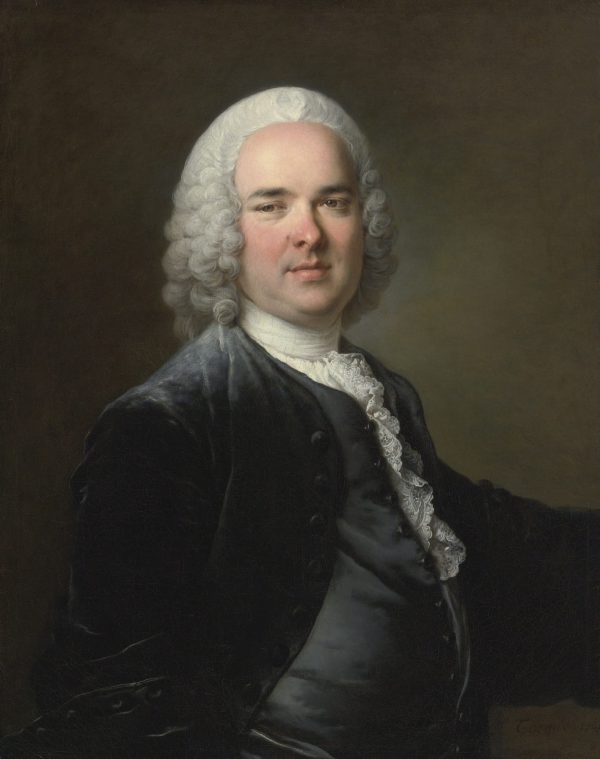Portrait of a Young Man, 1746
Oil on canvas, H. 0.81 m; W. 0.65 m
Signed and dated lower right: Tocqué 1746.
Provenance: Jean-Léon Gérome (1824-1904), Paris
Thence by descent to his daughter, Madame Etienne Boussod, née Jeanne-Élisabeth Gérome (1863-1914), Paris
With Paul Cailleaux, Paris
From whom acquired by Mr. and Mrs. José Rappaport, Buenos Aires
By whom sold, New York, Sotheby's, 6 June 1985, lot 146
Anonymous sale ("Property of a Private Collector"), New York, Sotheby's, 4 June 1987, lot 161.
Private collection, France.
- Postmortem inventory of the collection of the painter Jean-Léon Gérôme, 25 January 1904 (Paris, Archives nationales de France, Minutier Central [M. Boullaire, notary], Etude Frédéric Roiena et Vincent Roussel, 5 quai Voltaire, étude XII): « Grand salon / no. 263 Une tableau par Tocqué, portrait d’homme. »
- A. Doria, Louis Tocqué, Paris 1929, p. 155, cat. no. 533; also cited p. 144, under cat. no. 357.
Tocqué studied briefly with the history painter Nicolas Bertin but was more influenced by the portrait painter Jean-Marc Nattier, whose studio he entered in about 1718, and whose daughter he married in 1747. In Nattier’s studio he made copies of portraits by van Dyck, Nicolas de Largillierre and Hyacinthe Rigaud. It is at the relatively late date of 1731 that Tocqué was approved by the Académie Royale on presentation of the Family of Peirenc de Moras. He was admitted as a full member in 1734 with his three-quarter-length portraits of Louis Galloche and Jean-Baptiste Lemoyne (Paris, Louvre). His talents as a portrait painter were quickly recognized, and he received a number of royal commissions, including the full-length portrait of the Dauphin, Louis de Bourbon (1738) and of Maria Leczinska (1740; both Paris, Louvre).
His private portraits, which he exhibited at the Salon for over twenty years, allowed Tocqué to experiment more freely. In these, his carefully observed textures and tones brought his sitters to life with a naturalness and immediacy that earned him great praise from his contemporaries.
As in this picture, Tocqué imbued his sitters with an immediacy that avoided all artificiality or pomposity. His sitters included many aristocrats, but also artists, intellectuals and members of the haute-bourgeoisie: subjects who required an informal and objective representation rather than an idealized one.
This realism led to great demand for Tocqué’s art throughout Europe, and he was invited to work in St. Petersburg and Copenhagen. The relative informality that grew to characterize his portraits rejuvenated the tradition of portraiture throughout France and Scandinavia, and left a particularly lasting influence on artists such as Carl Gustaf Pilo and Jens Juel.
